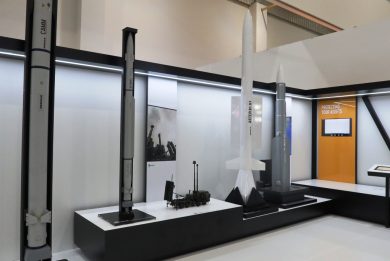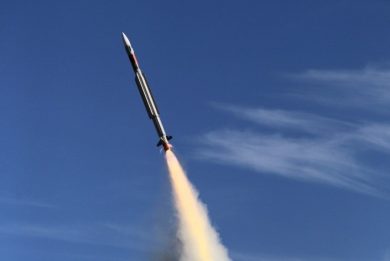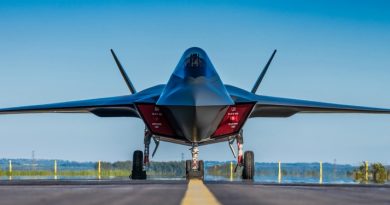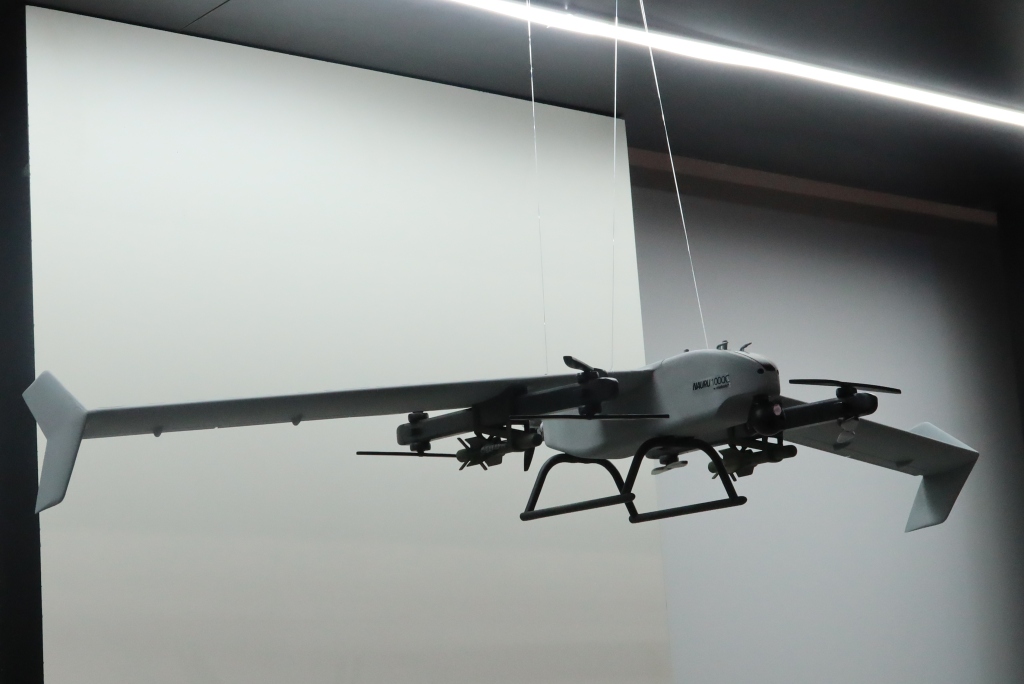
LAAD 2023 – MBDA and XMobots of Brazil cooperate on armed UAV
The increased use of UAVs in frontline kinetic missions is leading to the development of armed drones capable to strike enemy weapon systems with high effectiveness.
At LAAD 2023 a small model of an armed UAV was visible in the MBDA booth, showing what will soon become reality, which is a Nauru 1000C UAS armed with Enforcer Air missiles. The cooperation with XMobots was started in 2022 and involves the MBDA product, a derivative of the infantry Enforcer antitank missile designed by MBDA Germany following the requirements of the Bundeswehr. EDR On-Line understood that the Enforcer Air design is not yet fully frozen, although many of the components are the same used in the land version.
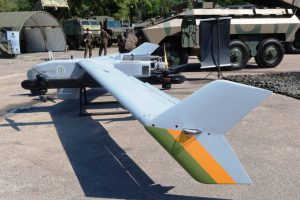
The GCS has three workstations, one for controlling the armed UAV, one for the payload, while the third can be a backup
As for the platform, this was born as a reconnaissance and surveillance UAS and one such systems was ordered by the Brazilian Army. One system includes three airframes, with a sensors suite comprising two EO/MWIR XSIS 222A gimbals containing a day optronic camera, a cooled medium wave infrared camera, a laser rangefinder and a laser pointer, two ground moving target indicators (GMTI) and synthetic aperture (SAR) 3D radars, an aeophotogrammetry camera system for producing 3D maps, a data link terminal, and a containerised ground control station (GCS). The GCS has three workstations, one for controlling the UAV, one for the payload, while the third can be a backup or be used to reprogramme the mission while in flight. One system is therefore able to ensure 24/7 operations considering the airframe endurance. The system was delivered in March 2022, and currently is used to train personnel, that should soon be qualified and start operational evaluation trials. A Nauru 1000C UAS was visible at LAAD in the Brazilian Army static display.
10 hours endurance at 60 knots cruising speed, operational ceiling of 10,000 feet
The airframe has a 2.9 meters long central fuselage fitted with a pushing propeller at the rear, the optronic gimbal being located at the front, and is equipped with a skid landing gear. The 7.7 meters span wing is fitted with wingtip vertical fins, and under each wing we find two pods carrying at their extremities four sets of two counter-rotating rotors activated by electric motors that are powered by batteries contained in the pods. These are used for vertical take-off and landing, while propulsion in horizontal flight is provided by a Zanzottera 30 hp combustion engine driving a two-blade pushing propeller. The 50 litres fuel tank ensures a 10 hours endurance at 60 knots cruising speed, the range being 60 km due to the data link. The UAS operational ceiling is 10,000 feet.
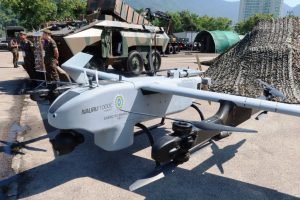
The Nauru 1000C has a maximum take-off mass of 150 kg, with a payload of 21 kg, While part of this, around 6 kg, is taken by the optronic gimbal, the remaining capacity is sufficient to carry two MBDA Enforcer Air missiles, which mass is declared under 7 kg. Less than 1 meter long, with a 90 mm diameter, the Enforcer Air has a range of 2 km and is fitted with a multi-effect warhead. While its ground counterpart is a lock-on-before-launch system, MBDA is developing for the air-launched version a lock-on-after-launch capability. Another issue that has not yet been fully defined is the launch mode, so it is still unclear if the Enforcer Air rocket motor will be ignited with the missile still attached to the airframe via a rail or will be dropped, the motor being ignited when the missile has reached a safe distance from the platform. EDR On-Line was told by XMobots technical personnel that the idea is to install one missile under each one of the nacelles carrying the rotors, probably because this would avoid modifying the wing to add further strongpoints. Such a solution would definitely need a drop-launch system as a direct-launch would impact the front lower rotor. This solution would also avoid the impulse that might destabilise the platform.
The programme launched together with XMobots, which is considered the biggest player in the UAS field in Latin America, aims at assessing requirements and understand which changes to the Enforcer Air might be done to suit armed forces needs, before freezing the project.
The Nauru 1000C fitted with prototypes of the Enforcer Air has not yet flown, however EDR On-Line understood that this should happen very soon.
Photos by P. Valpolini

